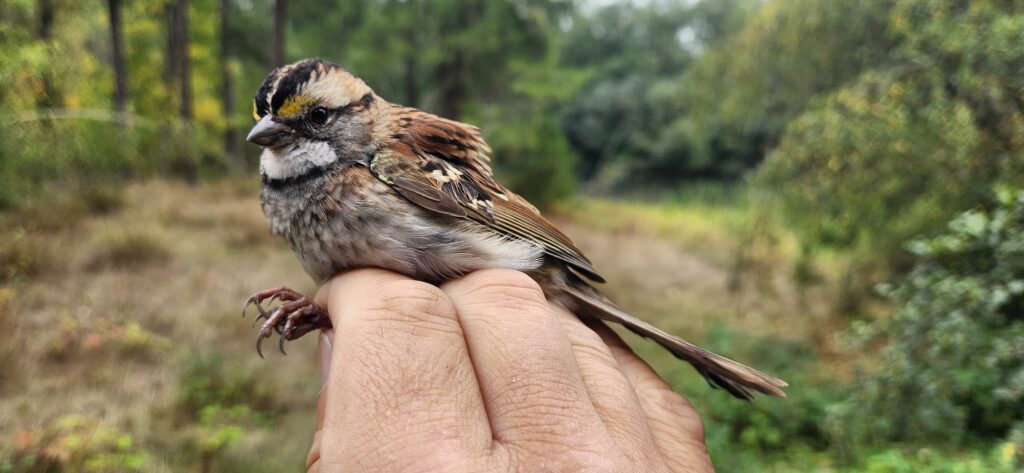Most people visit Northwest Trek Wildlife Park to see animals like grizzly bears, gray wolves, bald eagles, moose, and bison. But beyond the animals living at Northwest Trek under human care, guests will notice the “bonus” animals throughout the wildlife park: wild raccoons, squirrels, snakes, and many birds.
“The forest and habitat surrounding Northwest Trek provide a wonderful home for a diversity of native species,” said the wildlife park’s conservation program coordinator, Rachael Mueller. “It’s one of the reasons Northwest Trek is a key place to band birds.”
Northwest Trek and partner Puget Sound Bird Observatory (PSBO) hosted four bird banding events this past fall at the wildlife park. Aluminum bands engraved with unique numbers are put on birds’ legs to identify and keep track of individual birds.
“Bird banding allows us to study and identify individual birds,” explained Mueller. “The bird banding data is helpful in scientific research, management, and conservation projects.”

According to the United States Geological Survey, the organization that keeps records on all banded birds, bird banding can help:
- Locate nesting and wintering grounds for wild species.
- Learn about territorial and reproductive behavior.
- Determine lifespan, survival rate, reproductive success, and population growth.
During bird banding from September 28 to October 8, there were an impressive number and range of birds at Northwest Trek.
- 107 wild birds were banded at Northwest Trek during that time.
- 23 different species were recorded, ranging in size from Anna’s Hummingbird to Stellar’s Jay.
- On the first day, scientists banded and released 27 birds of 18 species.
“That’s a ratio that is not common for banding stations in the region,” said Scott Markowitz, director of research at PSBO. “It was a great opportunity for developing banders to see many different molt strategies and patterns in various wild species.”
Most Commons Wild Birds
Song Sparrows were the most common species, with 22 successfully banded and released.
“We mostly banded song sparrows,” said Mueller. “Nearly all of the song sparrows were our local subspecies, but, we also banded a pair of birds from a southern coastal subspecies.”
“We hope someone will report the bands from these two birds so we can see where they are going and better understand why they are so far north where they are not expected,” added Markowitz.
The public can report a bird with a federal band or color marker on the USGS website here.
The banding group also reported seeing:
- 18 Ruby-crowned Kinglet, a common bird seen in Western Washington in the winter
- 12 Spotted Towhee
- 11 Chestnut-backed Chickadee
- 8 Golden-crowned Kinglet
Most Unexpected Wild Bird Species
“We banded and released a White-throated Sparrow, a bird we don’t see often in Western Washington,” said Mueller. “They are rarely recorded here and are generally considered a species of the Eastern United States.”

“We were very excited to see it, and now that it has a band on it with an identification number, we hope we’ll get a record of where it goes,” said Markowitz.
Participants also banded a bright, red-breasted Sapsucker, allowing them to see birds that can be aged beyond their second molt cycle. And they saw a Northern Pygmy Owl nearby, lingering long enough for everyone to have a great view as it chased a few birds.

“The data we’re able to collect at Northwest Trek is extremely valuable,” said Markowitz. “Puget Sound Bird Observatory is excited about our partnership with Northwest Trek and the sound science that has already come of it.”